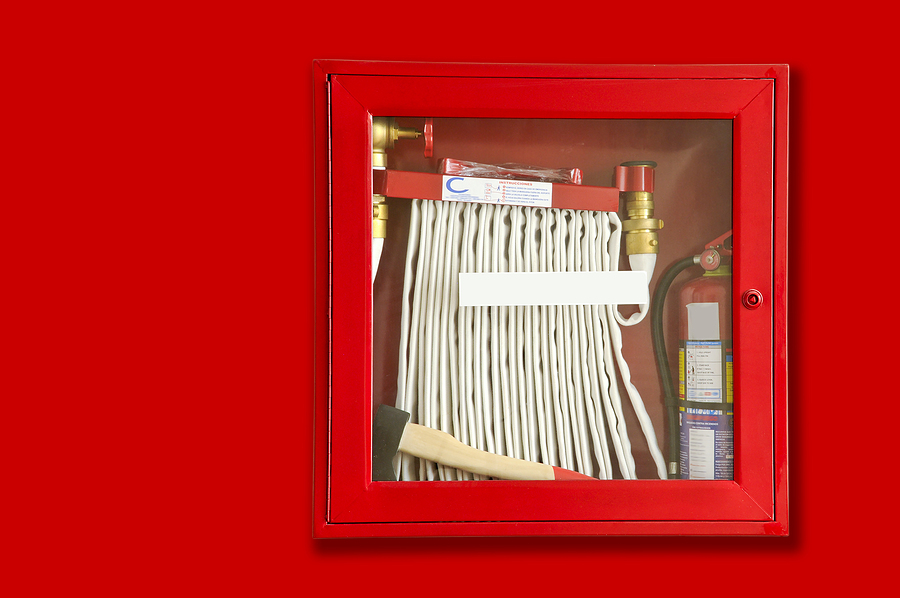If you own or manage a business or organization, it’s important that all your fire detection and safety equipment is inspected and tested on a regular basis.
Like any equipment, regular upkeep is important so that those safety measures do not fail when the need arises. If you have a sprinkler system, fire alarm system, or fire extinguishers, then it’s a good idea to know the condition and status of all of your equipment before the Fire Marshal pays you a visit.

How Should You Prepare?
Business owners and private individuals alike should have a fire inspection checklist to make sure their safety systems offer maximum fire protection. It might seem unnecessary to inspect before the inspection.
However, a bit of prevention can help you have a better working knowledge of your office’s fire prevention and mitigation measures in the event of an emergency. Additionally, it can be a good incentive to regularly review and organize important safety records.
With all of the things most workplaces deal with on a day-to-day basis, preparing for the fire marshall can feel like one more thing on the to-do list. In the long term, though, benefits are well worth a few minutes of organization and effort!
Here are some essential items to add to your organizational fire safety inspection checklist:
1. Check Fire Extinguishers
There are a few important key questions to keep in mind in regards to your fire extinguishers.
First of all, you need to make sure that your fire extinguishers have been inspected and that the inspections have been documented and any issues noted have been addressed. Just by glancing at the fire extinguisher, the seal should be intact and the pressure (if available) should show that it is within the correct range for use.
Next, ensure that your extinguishers are clearly visible and mounted in the correct locations. Examples of good places to mount extinguishers include kitchens/break areas, and near any combustible material.
Fire codes require where and how fire extinguishers should be mounted, as well as what types of occupancy are required to mount them. Make sure you know what is required for your area and type of occupancy.
Another best practice is to review fire extinguisher use with your employees and other occupants of your building.
2. Sprinkler Systems Inspection
It is important that the inspections are up to date with your sprinkler system and that these inspections have been documented and are easily accessible when the fire marshal arrives. Have them labeled, organized, and readily accessible in advance of their visit.
If you know when the fire marshal is coming, walk around and check your sprinkler heads, take a glance at the valves and control devices, and determine if all looks as it should. You are not the expert but it doesn’t hurt to look for noticeable issues.
What kinds of issues?
The National Fire Protection Association has a helpful guide of fire safety requirements that can answer some of your questions about what you should look for in your sprinklers.
3. Fire Alarm System Tests
As with the sprinkler system, it is important that your fire alarm is tested on a regular basis.
Make sure to speak with your fire marshal to determine with what regularity your system is in need of a test. During testing, make sure to keep all documentation of the inspections and be sure to fix any noted issues that arose during the inspection.
Also outside of inspections, you should test your system regularly and ask your monitoring company for documentation that shows the date that you tested your system.
Take a look at your hardwired fire alarm system. Make sure it’s properly programmed to connect with your electrical system. Check for dust and cobwebs that might interfere with your system’s operation by making it less sensitive, and clear them away.
4. Knox Boxes and Other Items
Any commercial building should have a Knox Box mounted on the side of the building.
This is a small box that contains a key or keys that will give the fire department access to every door in your building. If you do not have a Knox Box currently, contact your local fire department. Additionally, as part of your organization’s fire safety plan, make sure employees are aware of the Knox Box’s location so that they can direct firefighters to it in the event of a fire emergency.
Also take care as you walk through your building in preparation for the fire marshal’s visit that all exits, and doorways are clear of debris and ready for use in case of an emergency.
Develop a Fire Safety Plan
If your organization doesn’t already have one, put together a fire safety plan. When the fire marshal visits, invite them to review your plan and provide feedback, suggestions, and recommendations to make the plan as effective as possible.
Once you’ve got your plan, put it in a place that is accessible to all employees, review the plan with the members of your organization or who work in your building, and conduct occasional drills.
Going Further
Every city and state fire guidelines are different, with their own rules and regulations. However, these are some of the basic things to keep in mind and address when a Fire Marshal visit is approaching. For more detailed guidelines, please contact your local fire marshal or fire department!
If you have any questions about your fire alarm or if you are in need of an inspection, Security Alarm is happy to help. Please contact us online or call our office at 618-230-2954!
Want more information on how to protect your business from fire?
Learn More About Commercial Fire Alarms & Security
